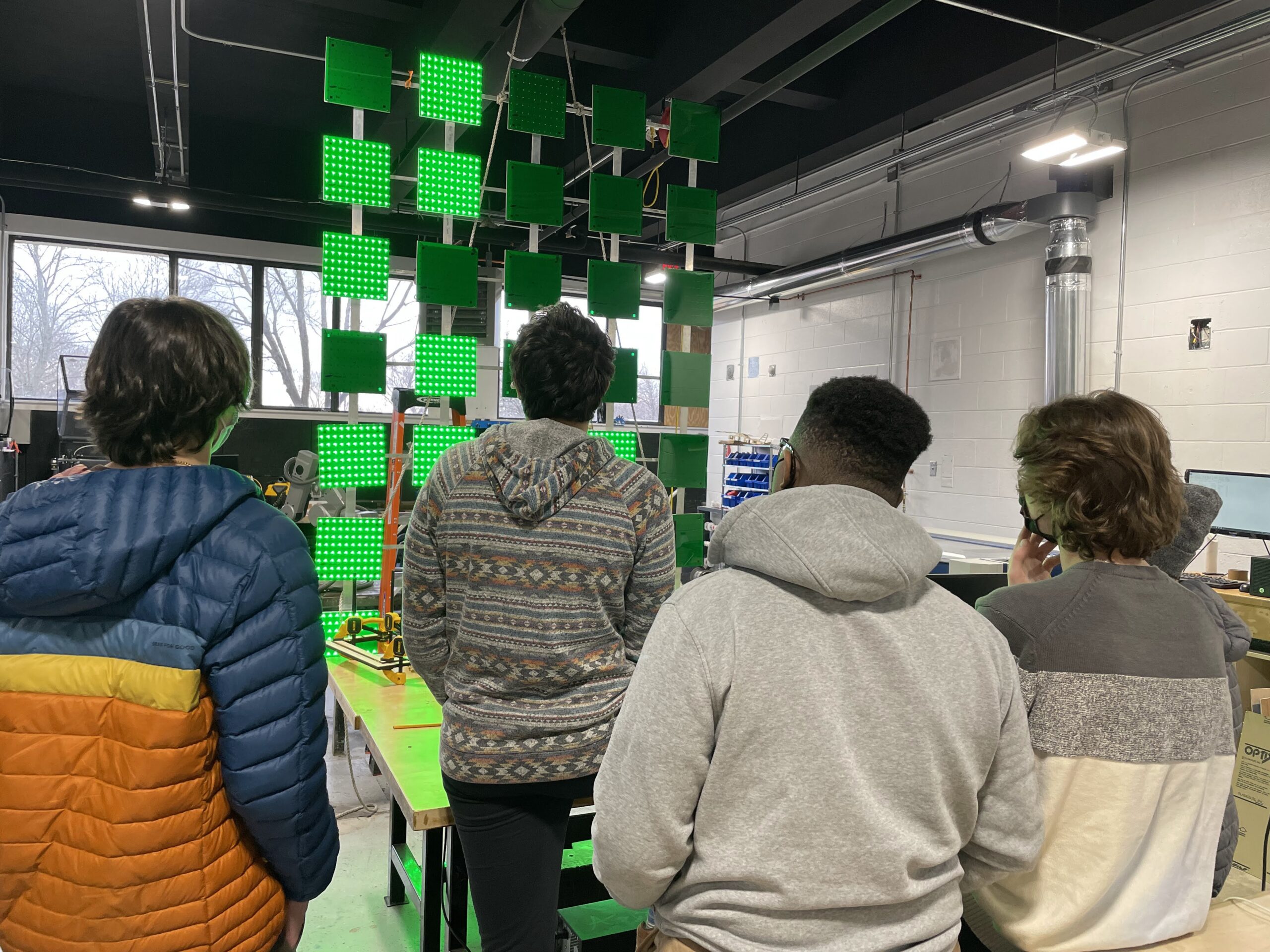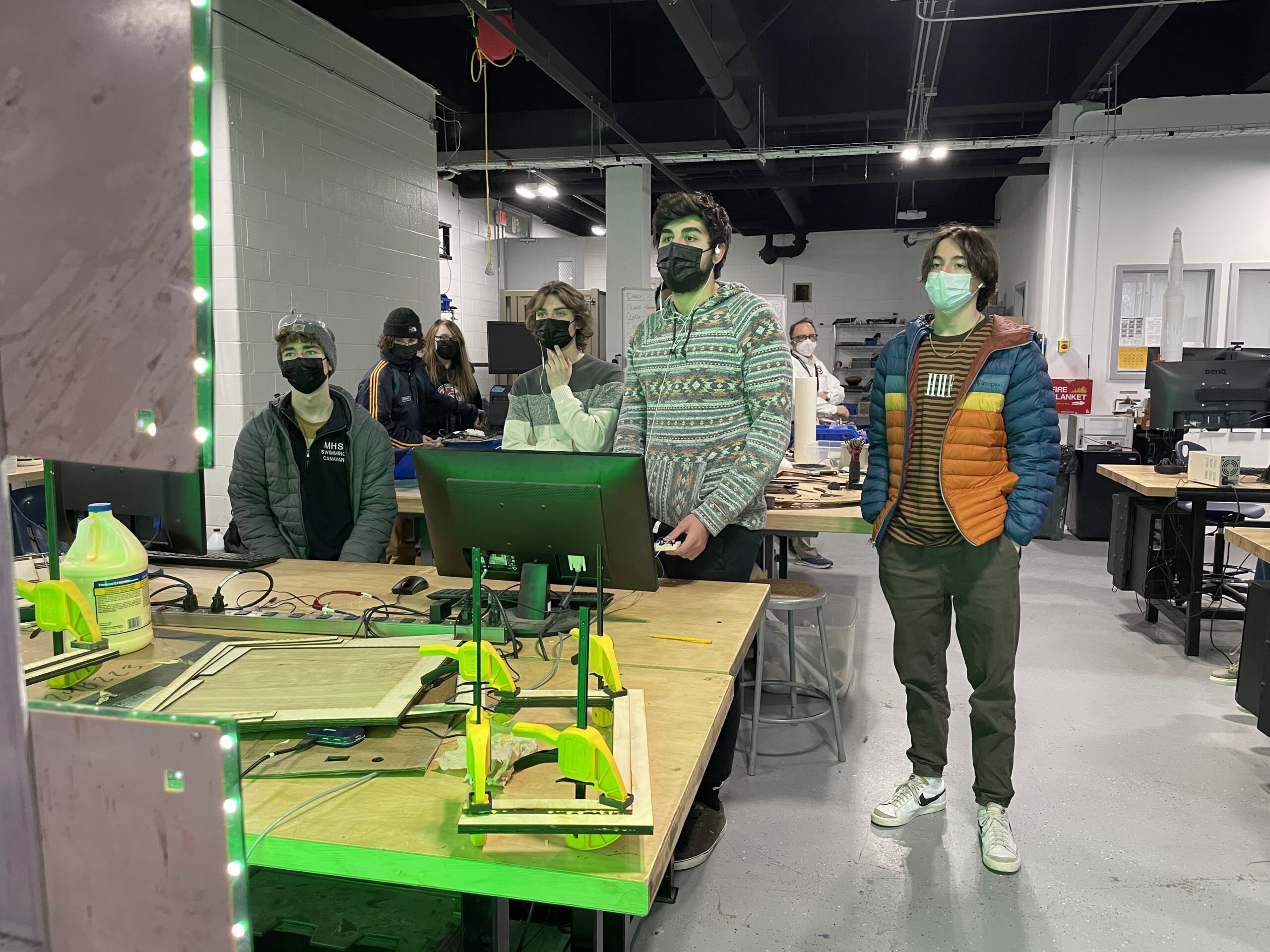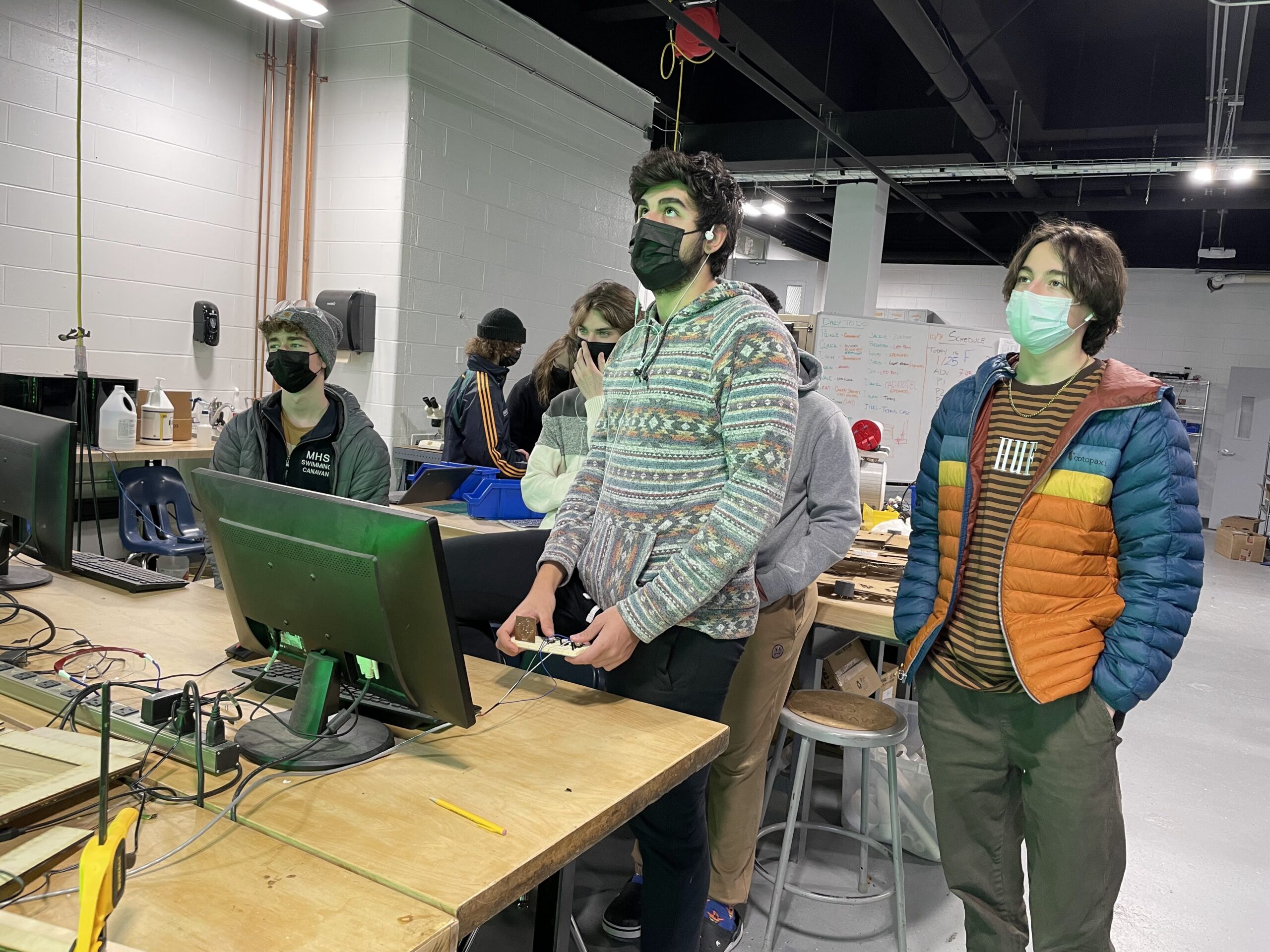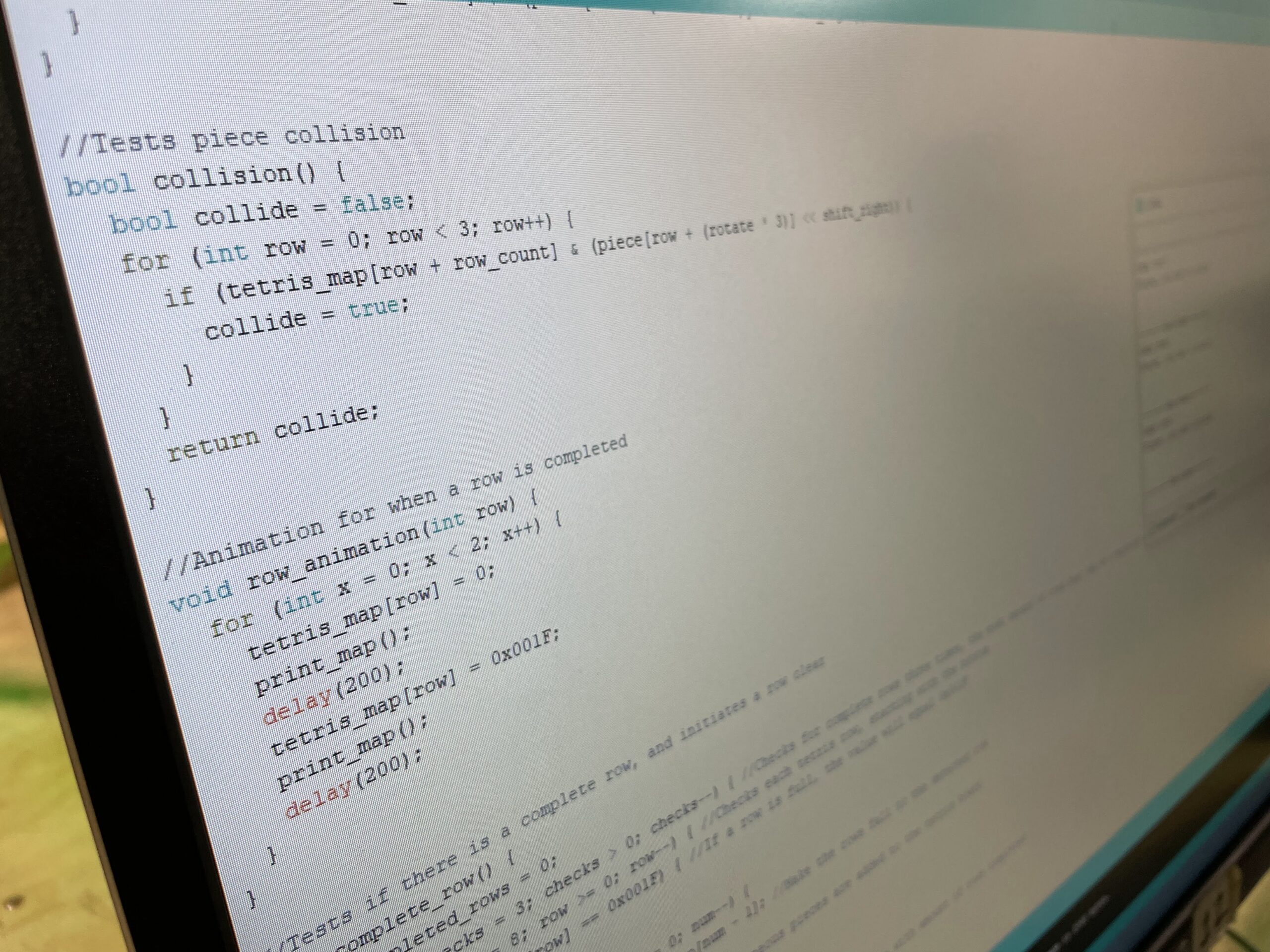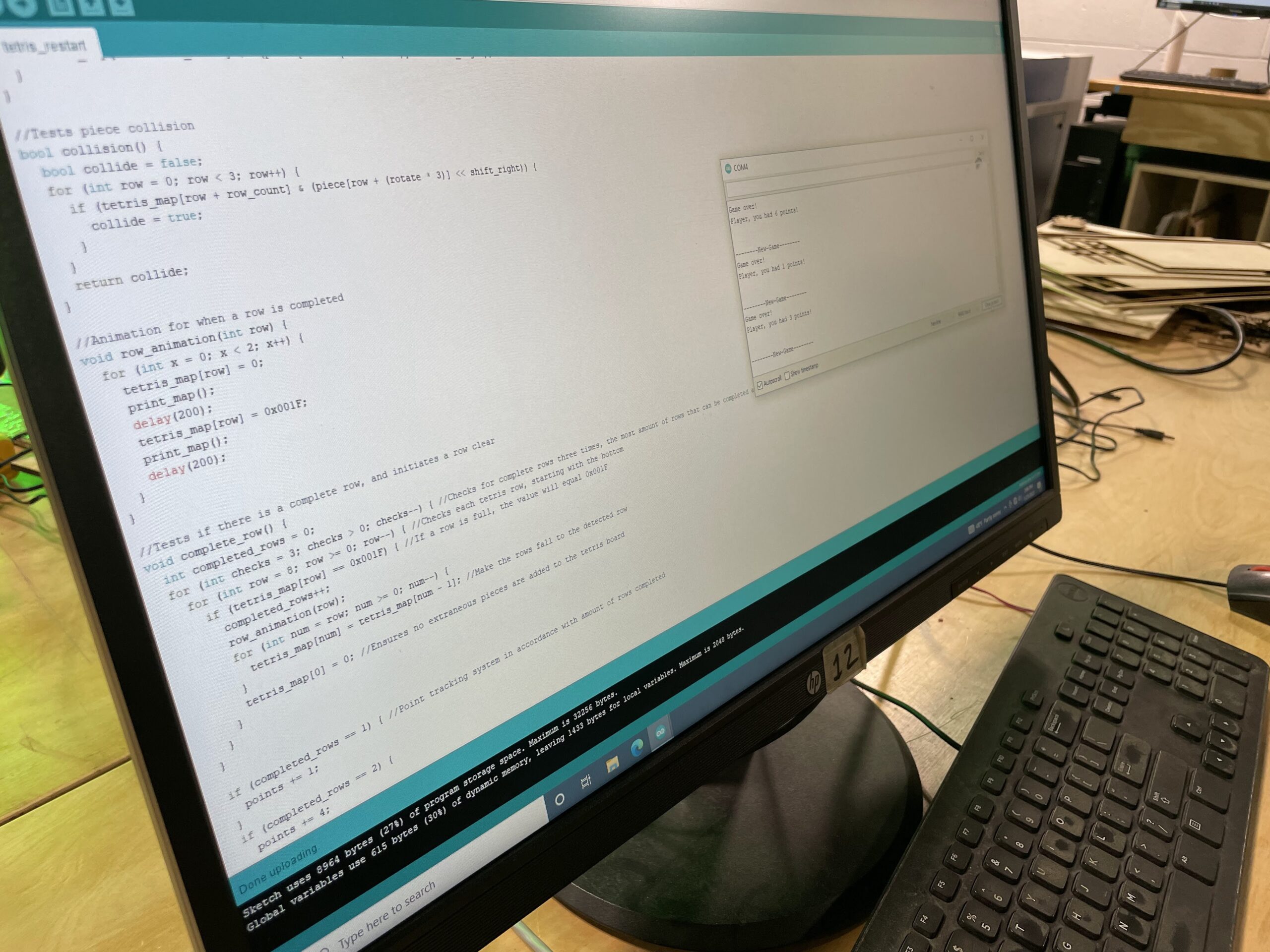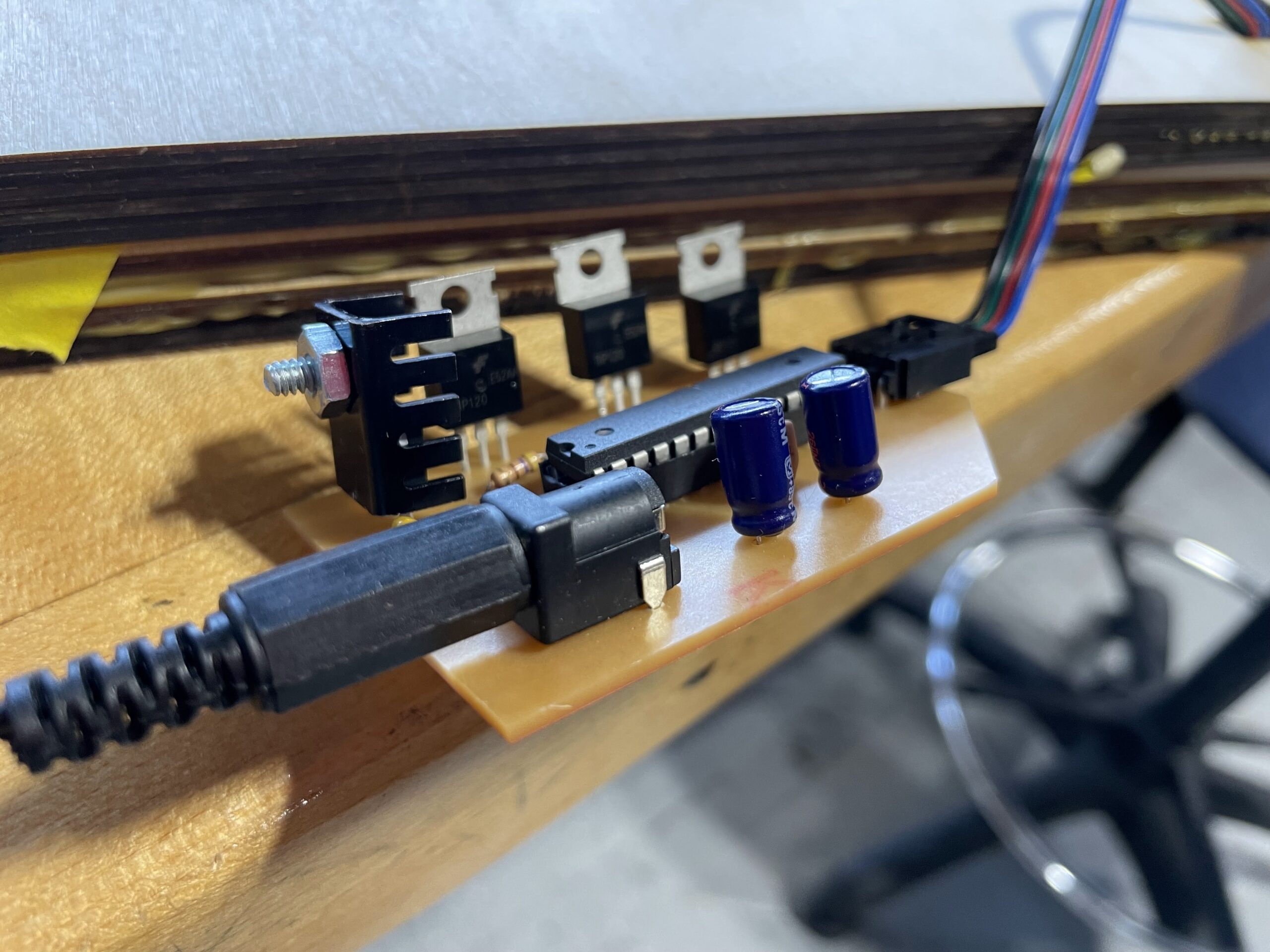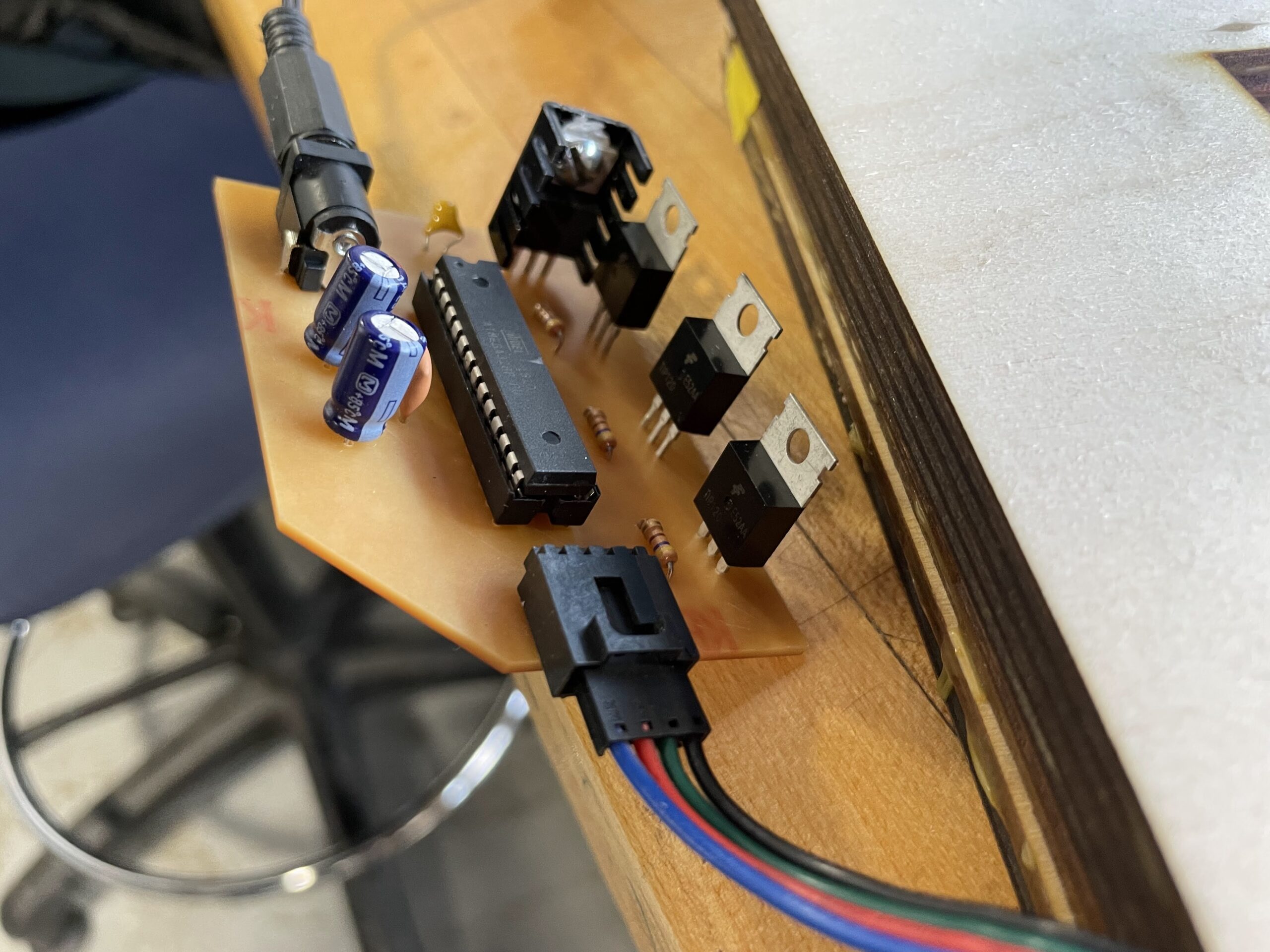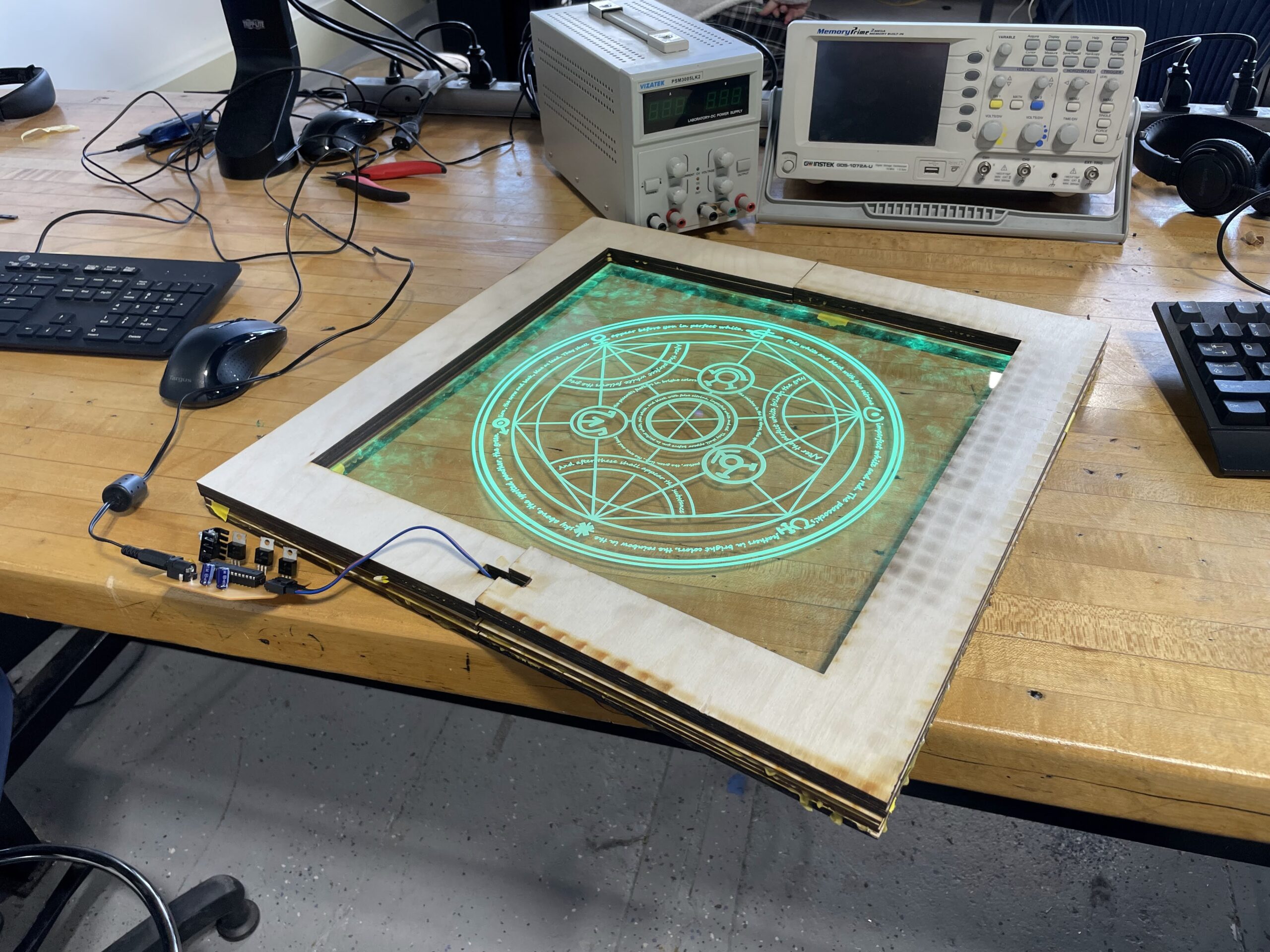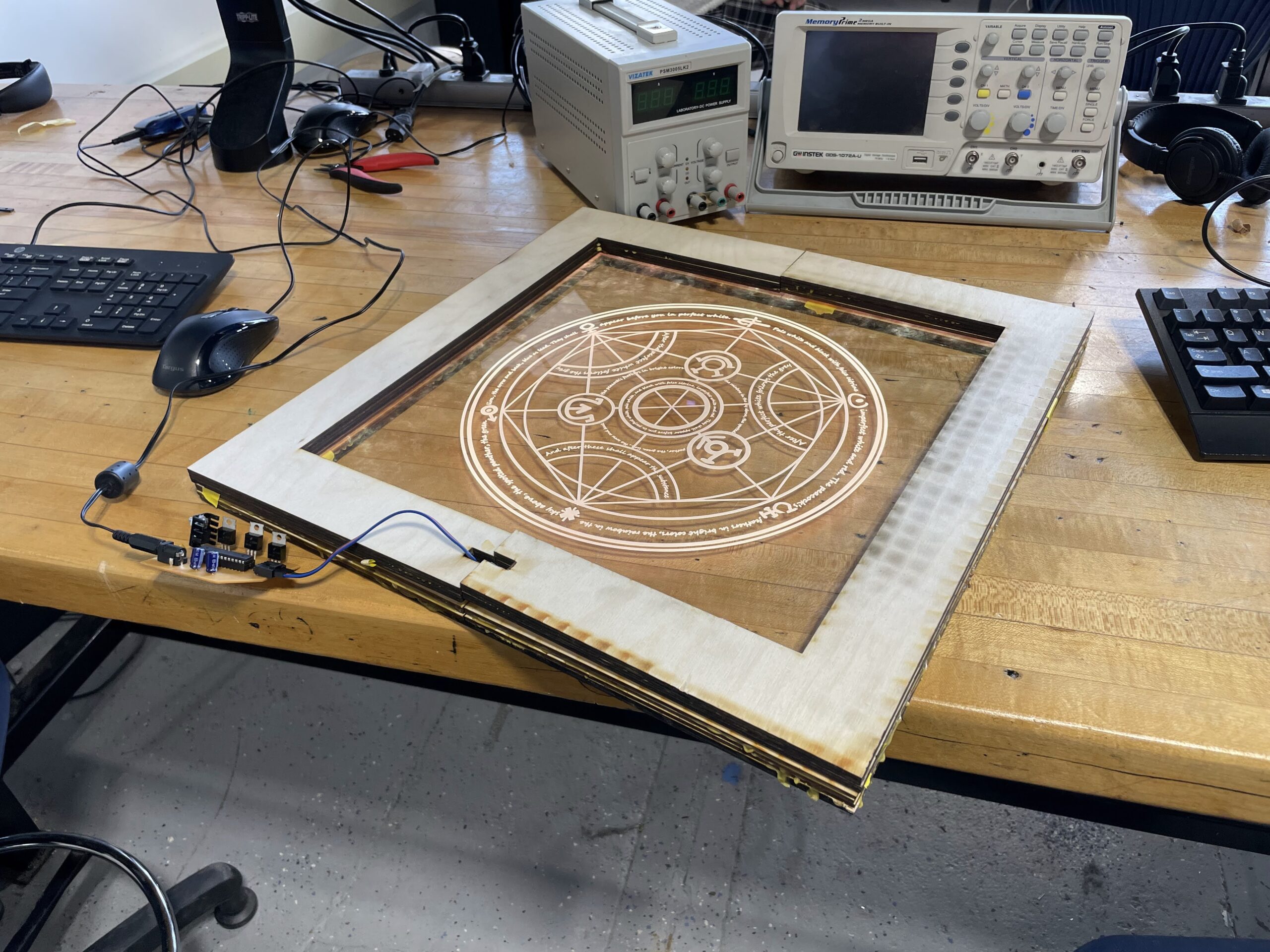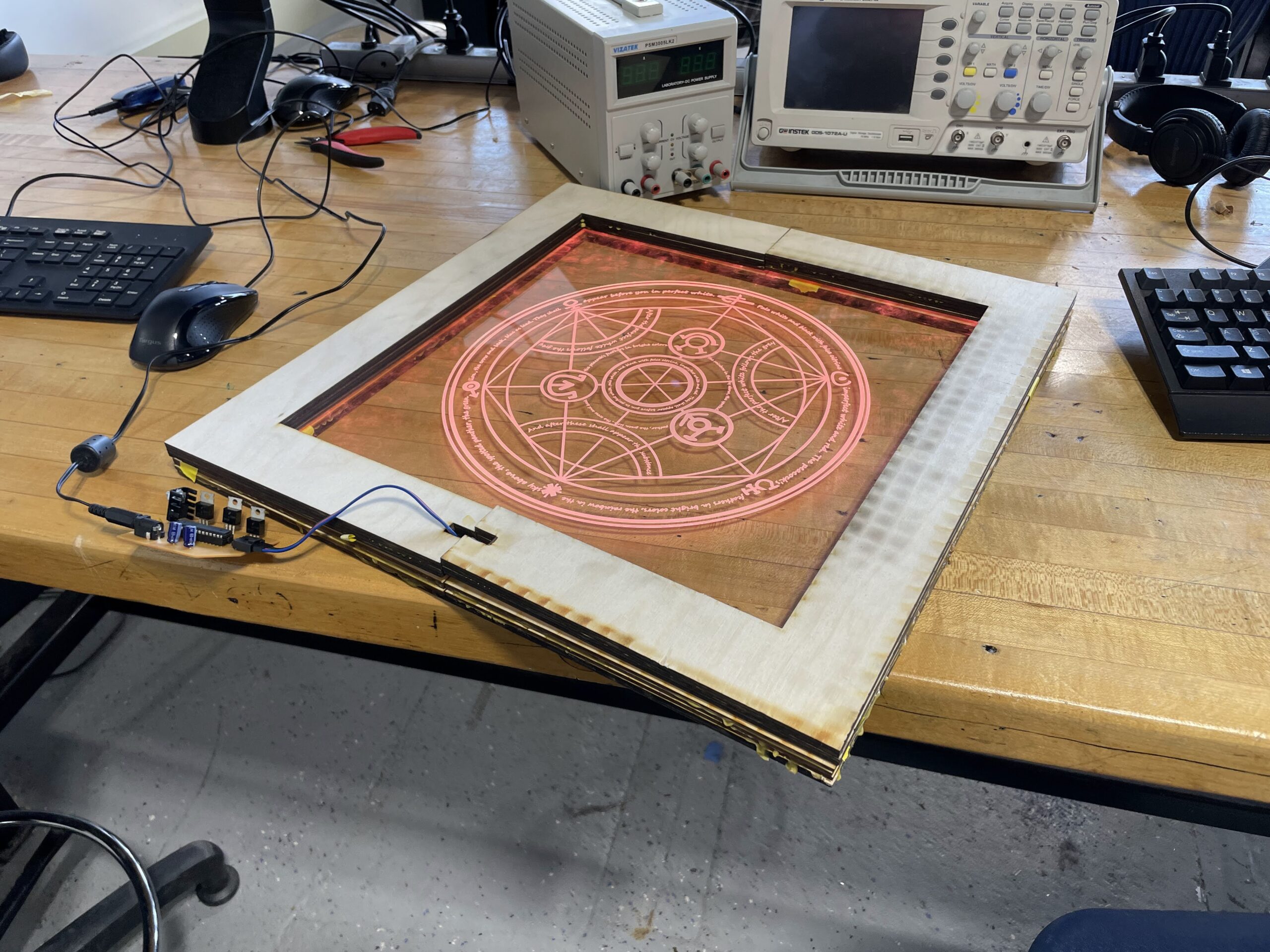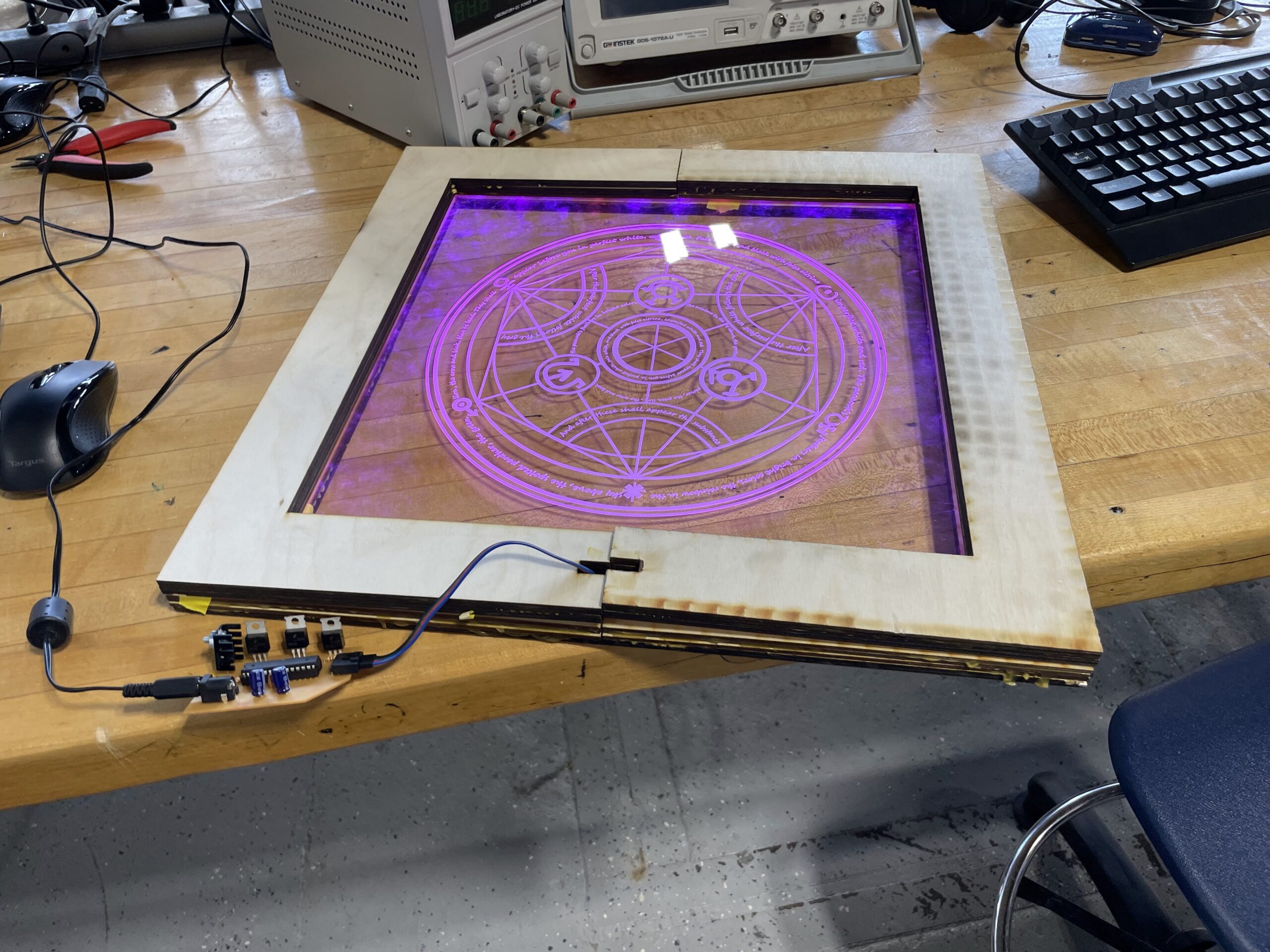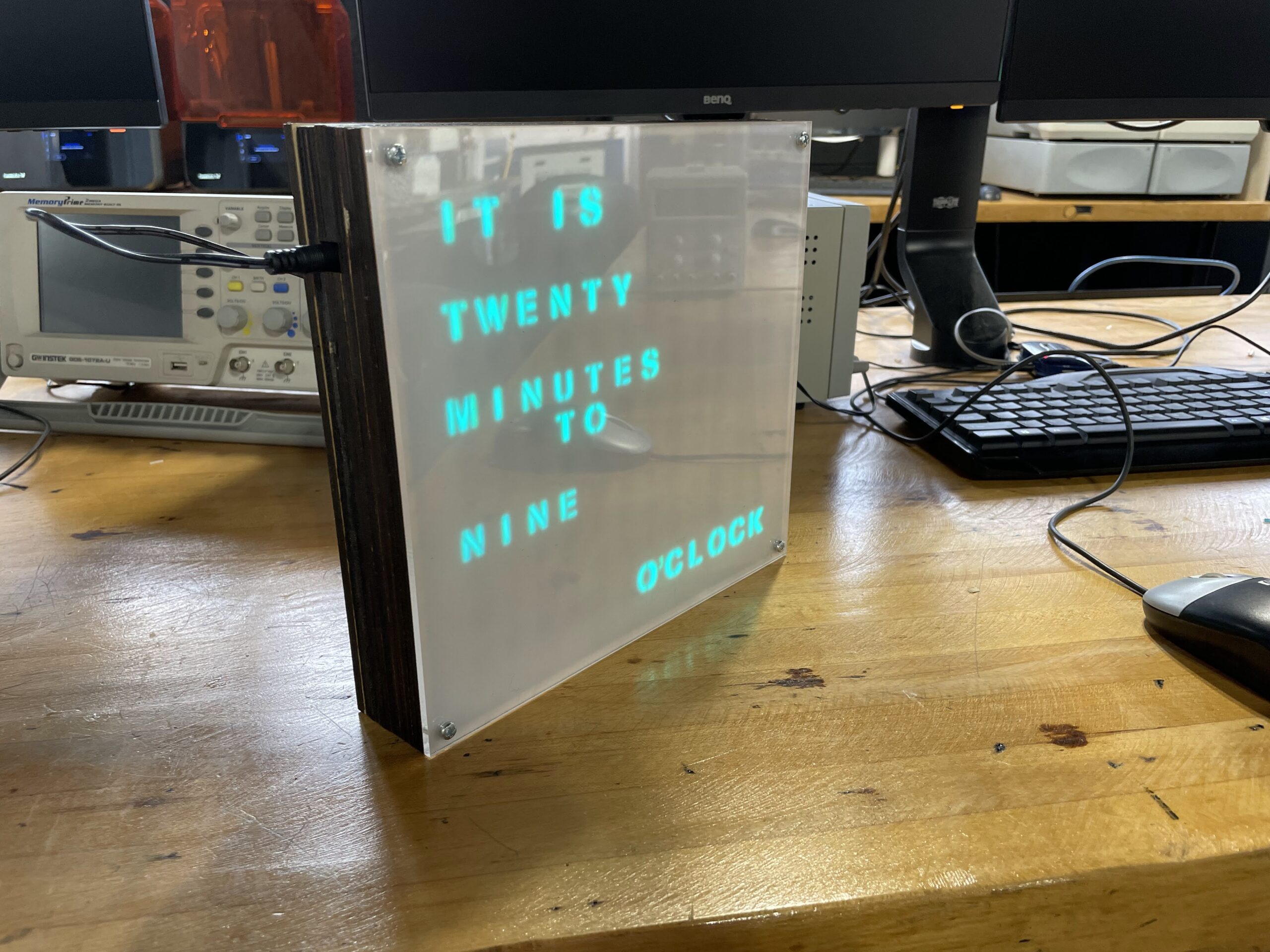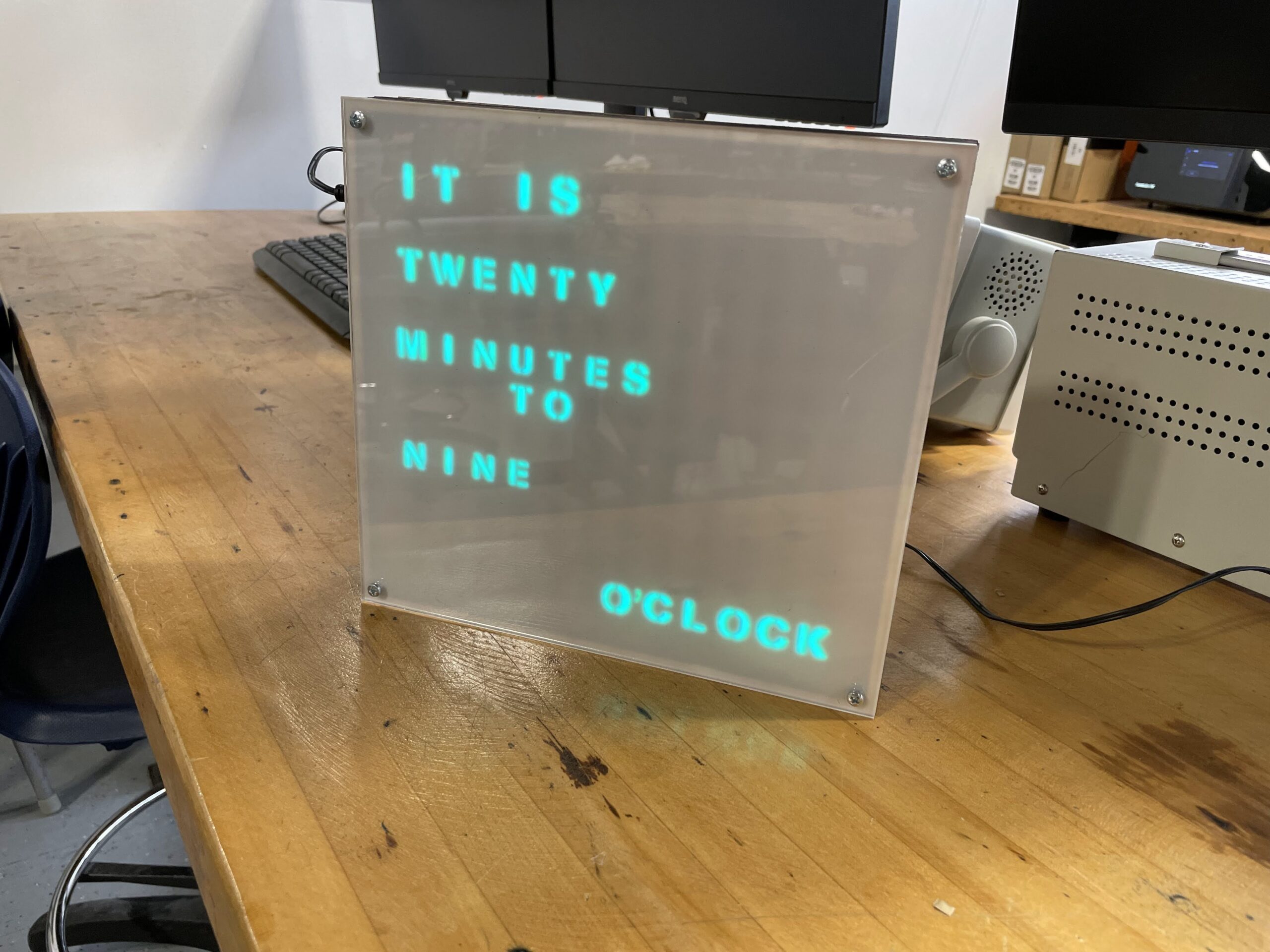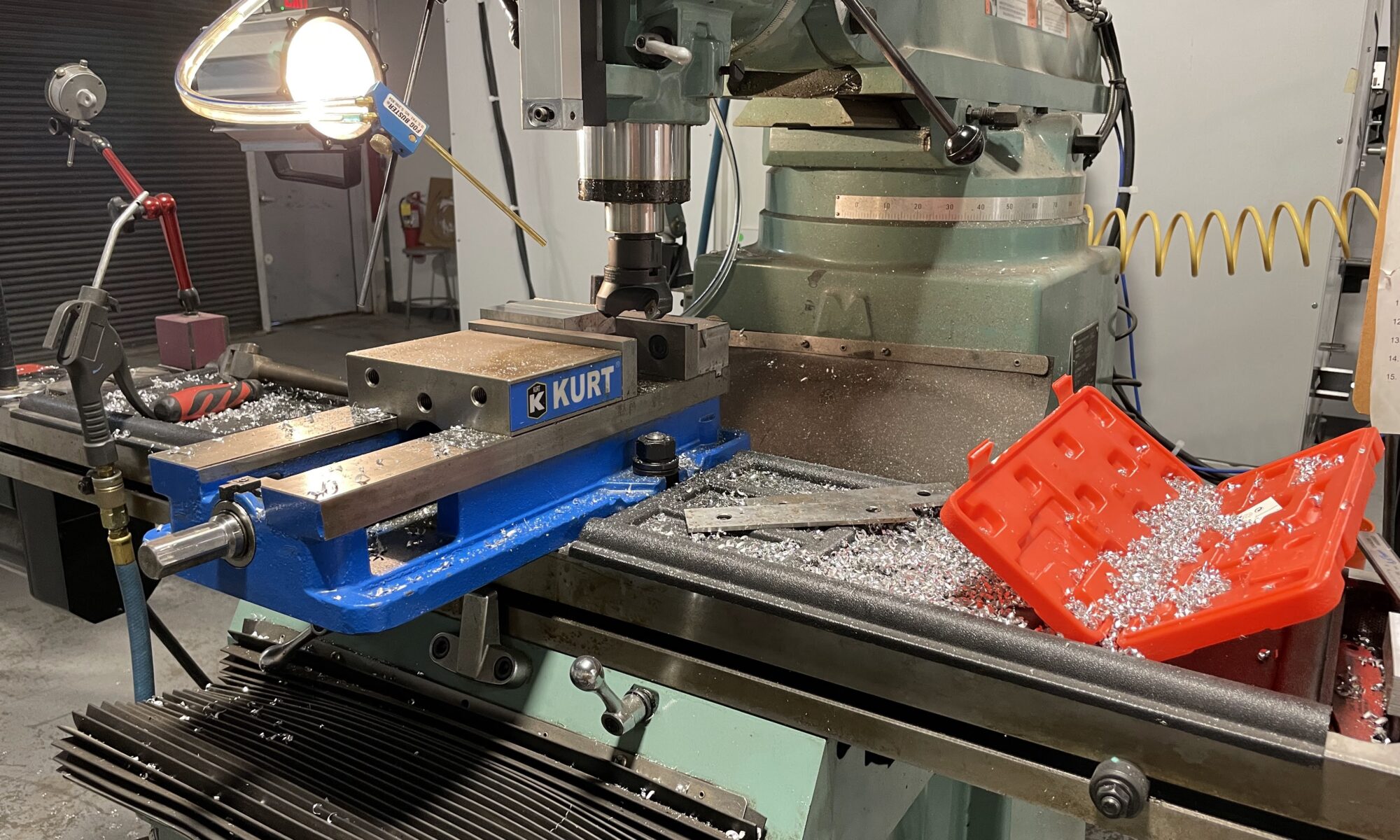When our current seniors were freshmen we began building a large format Tetris game. They mostly helped with wire organization and basic construction. The basic layout of the project is grid of C channel holding a 5 x 7 matrix of bright LED square panels which were donated to the Robotics shop from the MBTA. With the COVID pandemic the Tetris Rig, as its come to be known, has had little work done to it. This year, however, a senior, who was one of the freshmen who first began working on the rig, decided to return to the project and get it working.
This student, Dylan S ’22 has spent most of the year reorganizing all the wiring, creating new PCBs, and writing code to make the rig fully functional. Today was the first day we were finally able to play the game using a small controller he built. It’s really incredible how much work has gone into this project and how incredibly well it performs. There are still some modifications that are going to be made, but it was a solid milestone to mention for today’s post. Video and images below.
